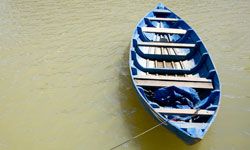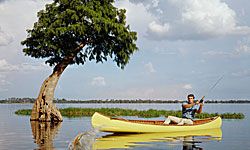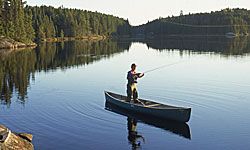Just like fishing itself, the canoe embodies quiet elegance. For thousands of years, people have been discovering the simplicity and tranquility of canoe fishing. And canoes are especially good for maneuvering in rivers, as well as for accessing remote waters, ponds and portages where a larger boat wouldn't work.
Of course, the canoe doesn't provide all the comfort and conveniences of larger boats. If you don't outfit it well, it can get uncomfortable after a while. If you aren't careful, you can easily capsize while battling a fish. And many aren't big enough for a lot of gear.
Advertisement
But this also is the beauty of canoes: They force you to minimize to what's essential and make do with what you have. Who can imagine a better realization of Thoreau's call to "simplify, simplify, simplify"? Not to mention that a single-seater canoe is easy to handle for the solitary fisher on meditative excursions.
If you're in the market to buy a canoe for fishing, some are better than others for this purpose. Look for ones that will be quietest in the water and have good stability. Lightweight canoes will be best for portages. You can even find canoes specifically meant for fishing with comfortable seating, built-in pole brackets and dry storage.
If you already own a canoe and are serious about making it ready for fishing trips, you can rig it to fit your needs. It just takes a little bit of creativity and the following tips.


